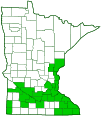Western Fox Snake
(Pantherophis ramspotti)
Conservation • Description • Habitat • Biology • Distribution • Taxonomy
Conservation Status |
|
|||||||
| IUCN Red List | LC - Least Concern |
|||||||
| NatureServe | N5 - Secure S4 - Apparently Secure |
|||||||
| Minnesota | Species in Greatest Conservation Need |
|||||||
Description |
||
Western fox snake is a medium-sized to large, nonvenomous, typical snake. It is one of the four largest snakes in Minnesota. Adults are usually The body is light brown, yellowish-tan, or gray with an upper (mid-dorsal) row of large blotches and on each side a lateral row of smaller alternating blotches. The blotches are dark brown and are bordered with black. The dorsal blotches on most of the body are wider than long. Toward the head they are long an narrow. On the tail they become rings. On average there are 43 dorsal spots between the head and the anal opening (cloaca). The belly is pale yellow with smaller black or brown markings in an irregular checkerboard pattern. The head is reddish and mostly unmarked. The dorsal scales are weekly keeled and the lateral scales are smooth. Young snakes have a lighter background color, a dark bar between the eyes, and a dark line from the eye to the back of the jaw. |
||
Size |
||
|
||
Similar Species |
||
Habitat |
||
Moist places. Prairies, woodland openings and edges, lowland meadows, river bottoms, and rocky outcroppings near water. |
||
Biology |
||
Behavior |
||
In the spring and fall adults move about during the day. In the hot summer they move about at night. When confronted they will often vibrate their tails producing a buzzing sound. In leaf litter or dry grass the sound resembles that of a rattlesnake. When handled it will often release a musky, fox-like odor, from which it gets its common name. |
||
Lifespan |
||
17 years |
||
Life Cycle |
||
Adults emerge in April. Mating occurs from April to July. After mating, the female lays a clutch of 7 to 29, usually about 14, leathery, 1½″ to 2″ long eggs. The eggs hatch in July or August. In October adults overwinter in rocky crevices or man-made structures that extend below the frost line. |
||
Food |
||
Mice and other small rodents, birds, and bird eggs. Young may also eat frogs. |
||
Distribution |
||||
|
Sources |
|||
| 1/7/2023 | ||||
Occurrence |
||||
Common in the Mississippi, St. Croix, and Minnesota River valleys, uncommon or absent elsewhere. |
||||
Taxonomy |
|||
| Class | Reptilia (Reptiles) | ||
| Superorder | Lepidosauria | ||
| Order | Squamata (Snakes and Lizards) | ||
| Suborder | Serpentes (Snakes) | ||
| Infraorder | Alethinophidia | ||
| Superfamily | Colubroidea | ||
Family |
Colubridae (Harmless Egg-laying Snakes) | ||
Subfamily |
Colubrinae | ||
Genus |
Pantherophis (North American ratsnakes) | ||
Genus Species |
|||
Subordinate Taxa |
|||
|
|||
Synonyms |
|||
Elaphe vulpina Mintonius ramspotti Pantherophis ramspotti Pantherophis vulpinus |
|||
Common Names |
|||
Western Fox Snake western foxsnake |
|||
Glossary
Cloaca
The single posterior cavity, often called the vent, that serves as an opening for the release of intestinal waste, urinary waste, and sperm in most vertebrates (except most mammals) and some invertebrates.
Visitor Photos |
|||||
Share your photo of this reptile. |
|||||
| This button not working for you? Simply email us at info@MinnesotaSeasons.com. Attach one or more photos and, if you like, a caption. |
|||||
Mike Poeppe |
|||||
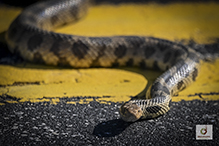 |
|||||
James Folden |
|||||
Young Western Fox Snake |
|||||
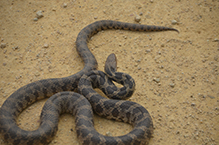 |
|||||
Brian Johnson |
|||||
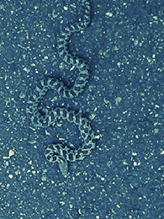 |
|||||
MinnesotaSeasons.com Photos |
|||||
|
|||||

Slideshows |
||
| Western Fox Snake (Pantherophis vulpinus) Michael Taylor |
||
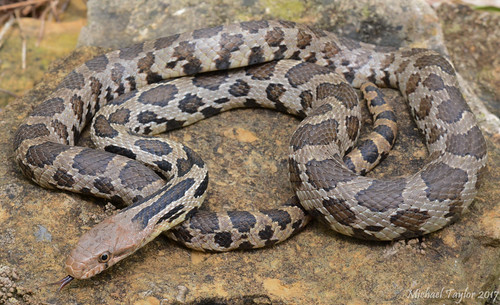
|
||
| Fox Snake (Pantherophis vulpinus) Pierson Hill |
||
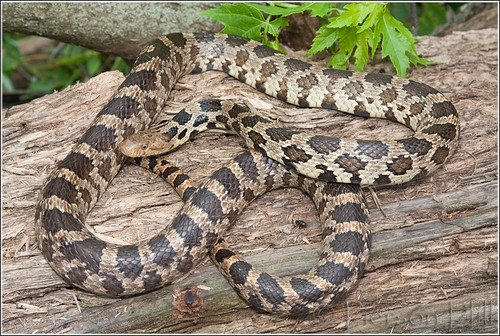
|
||

Visitor Videos |
|||
Share your video of this reptile. |
|||
| This button not working for you? Simply email us at info@MinnesotaSeasons.com. Attach a video, a YouTube link, or a cloud storage link. |
|||
James Folden |
|||
| Western Fox Snake 01 Published on May 14, 2018 |
|||
Other Videos |
|||
| Fox Snake strike and rattlesnake mimicry sienkotothemax |
|||
About
Published on Apr 28, 2012 A moment of excitement at work as we happen upon a fox snake (Elaphe vulpina) and have to relocate him (or her) away from the herbicide |
|||
| Fox snake striking Reptile and Amphibian Video |
|||
About
Uploaded on Oct 25, 2007 Aggressive fox snake in a defensive posture striking at the camera |
|||
| Iowa Reptiles Episode 4: Fox Snake finnersnake |
|||
About
Uploaded on Apr 21, 2008 This is another video from the Demastus Boys where we show off a beautiful Fox Snake caught in Banner Lakes State Park. |
|||
| Fox Snake dupageforest |
|||
About
Uploaded on Jul 20, 2011 The fox snake has a well-camouflaged brown and beige body and grows up to five feet. As a member of the rat snake family, this snake constricts its prey. When DuPage County was once farmed and contained thousands of acres of corn and grain fields, rodents were plentiful; the fox snake kept the rodent population in check in former DuPage. Today, the fox snake lives in grassy areas in DuPage forest preserves. This fox snake is used in educational programs about native wildlife at Willowbrook Wildlife Center in Glen Ellyn, Illinois. It is handled by naturalist Kevin Luby. Willowbrook is owned and operated by the Forest Preserve District of DuPage County. |
|||
| Minnesota Fox Snake TeeJay5085's channel |
|||
About
Published on May 5, 2013 Large adult male Fox snake just emerged from hibernation. Details of video show typical 'tail rattling' in dry leaves. (And the main reason why some people think we still have Rattlesnakes in the Minnesota River Valley) |
|||


Created: 10/14/2014
Last Updated:
